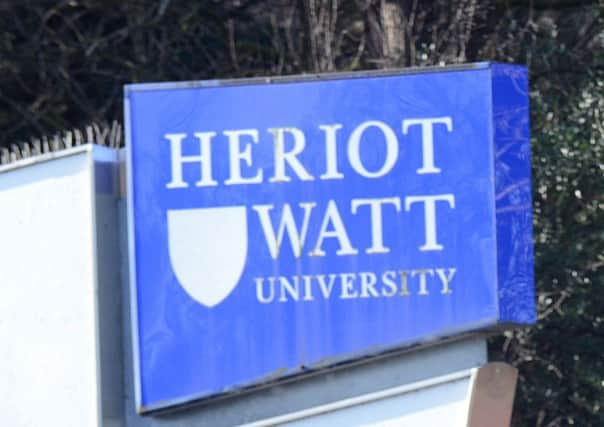Welding breakthrough at Heriot-Watt to transform manufacturing


Scientists based at the Edinburgh university have successfully fused glass to metal using an ultrafast laser system, a feat which has historically been impossible because of the differences in thermal properties which would cause the glass to shatter.
The new process could potentially transform the manufacturing sector by eliminating the need for adhesives, increasing durability and offering more design flexibility. It can also have direct applications for businesses active in the aerospace, defence, optical technology and healthcare fields.
Advertisement
Hide AdAdvertisement
Hide AdThe Heriot-Watt laser system uses pulses of infrared light which last a picosecond – one trillionth of a second – applied in tracks along the materials to bind them together.
It has successfully welded optical materials such as quartz, borosilicate glass and even sapphire to metals including aluminium, titanium and stainless steel.
The welds have remained intact during tests conducted at temperatures varying from -50C to 90C, reassuring scientists that they are “robust enough to cope with extreme conditions”.
The project is funded by Innovate UK, Heriot-Watt University and contributions from additional industry partners.
Project leader Duncan Hand and his team are working with a consortium led by laser micromachining systems integrator Oxford Lasers, alongside laser specialist Coherent Scotland; engineering firm Leonardo; and optical products manufacturer Gooch & Housego.
Leonardo and Gooch & Housego, both end users of the technology, are to develop a prototype for the laser processing system and take it closer to commercialisation. Two further partners, Glass Technology Services and the Centre for Process Innovation, provide additional routes to commercialisation, including in packaging of organic light-emitting diode (OLED) devices.
Hand, director of the five-university EPSRC Centre for Innovative Manufacturing in Laser-based Production Processes, said: “Traditionally it has been very difficult to weld together dissimilar materials like glass and metal due to their different thermal properties – the high temperatures and highly different thermal expansions involved cause the glass to shatter.
“Being able to weld glass and metals together will be a huge step forward in manufacturing and design flexibility.
Advertisement
Hide AdAdvertisement
Hide Ad“At the moment, equipment and products that involve glass and metal are often held together by adhesives, which are messy to apply and parts can gradually creep, or move.
“Outgassing is also an issue; organic chemicals from the adhesive can be gradually released and can lead to reduced product lifetime.”